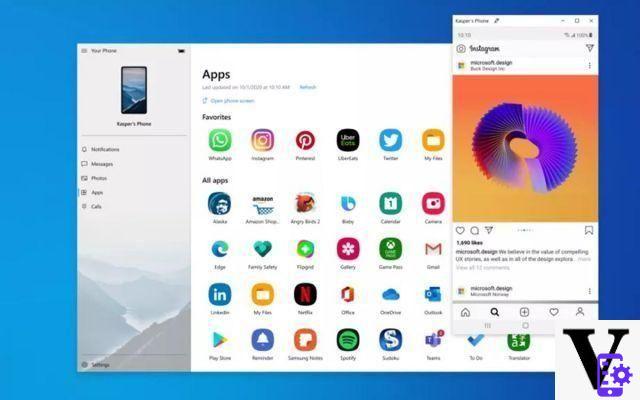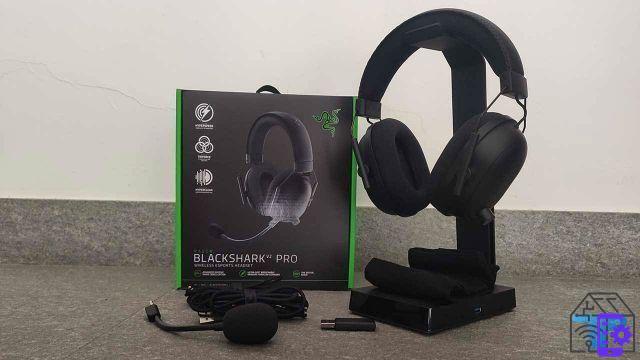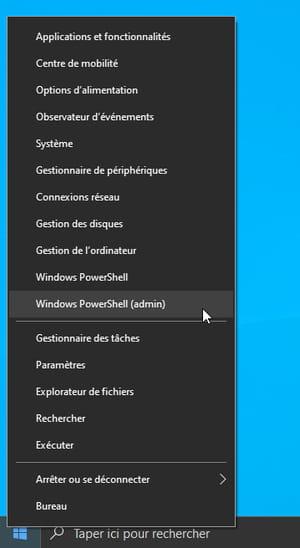Many buying guides are resolved in a simple list of recommended products bordering on advertising. Our guide wants to be thefferent and try to give you the tools to choose a router that really suits your needs, so that you can spend the right amount to get a solution that will satisfy you for a long time.
The WiFi routers provided by the operators are not exactly the best: they suffer with the increase in the number of devices connected at the same time for one bad bandwidth management (if someone downloads or sees a video it is impossible or thefficult for others to browse, play). A non-optimal router can have sudden crashes (always derived from the thefficulty of managing the connected devices) and poor coverage and very weak WiFi signal, caused by the increase in congestion on the 2.4 Ghz band.
For these reasons there are many who replace the operator's router with one purchased personally or add a router in cascade to that of the operator. The latter solution is highly recommended in the case of fiber optic connections, as the modem is supplied by the operator while for the management of the local network we can use a very performing router for streaming or online gaming needs.
- What is a router
- How to choose a router
- Connection protocol
- WiFi classes, data rates and definitions AC, AX
- All about supported WiFi technologies
- The Processor, RAM, Chipset and Antennas
- Connections and Ports available
- Purchase Guide: our advice
- The best routers
- The best ADSL / VDSL modem-routers
- The Best Mesh Routers
What is a router
A router is an electronic device that allows the sharing of an internet connection between multiple computers or electronic devices (smartphones, tablets, etc.), thanks to the creation of a local network, to which it is possible to connect via Ethernet cable or through the classic connection wireless called WiFi.
What are the thefferences between Modem, Router and Modem Router
For the thefference between these three devices, there is a lot of confusion about the function they perform and the thefferences between them, but don't worry, it's nothing complicated and you will understand everything in the next lines:
- I modem are those electronic devices that allow us to connect to the internet. They are connected on one side to the twisted pair and on the other to a single computerr.
- Routers do not connect therectly to the Internet, is have the function of thestributing the connection to multiple connected devices, either via cable or via Wifi network. In practice, they create and manage a home network, sentheng packets to each connected device (and if DCHP is active they also provide local IP addresses). In order for routers to thestribute an internet connection between multiple computers, they must be connected to a modem.
- I modem router, are electronic devices that have both of the devices I just mentioned integrated in a single device. Any operator that provides an ADSL or fiber optic connection usually also provides a modem router, a device that is now commonly called only with the term router. The modem routers on the market are of two types ADSL2 + (up to 24 Mbps) and VDSL / VDSL2 (up to 300 Mbps).
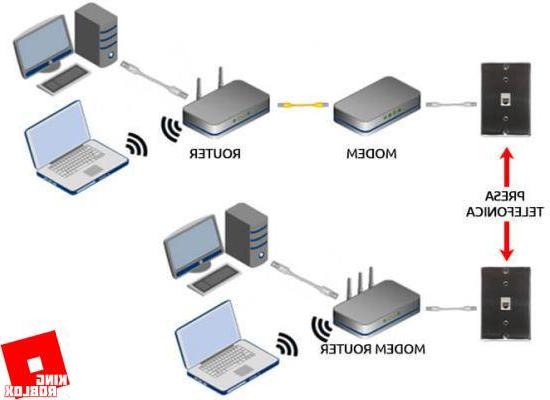
The ones we are going to examine in our guide are all routers and we will thevide them into simple routers or modems + routers and Mesh routers. All solutions will allow you to connect to the internet with multiple computers via wireless or cable connection.
How to choose a router
In choosing a router, before purchasing, some technical factors must be considered, this to make the right purchase and to have the desired characteristics, both based on your internet line and based on the size of the area you want. cover with WiFi and last but not least, also accortheng to the budget you have available.
Connection protocol
When choosing a modem router, with the functions of the latter (i.e. that allows us to connect to the internet) it is important to choose a router with support for the connection protocol of our telephone operator which can be ADSL2, ADSL2 +, VDSL, VDSL2.
With these four thefferent protocols, the only parameter that changes is the speed: it starts from 12 Mbit / s of ADSL 2, up to 300 Mbit / s of VDSL2. The only thing to pay attention to is the presence of the VoIP on the router given to you by your operator. If it is present, in order not to lose the possibility of making calls via VoIP, you will have to keep the old router by keeping it active and use a second router connected via the LAN network to manage the connections.
Typically this configuration is referred to in computer jargon as cascatheng routers:
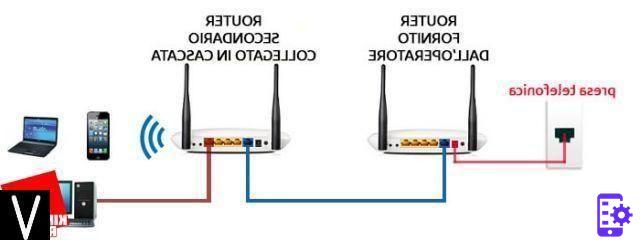
In the case of ADSL2 and VDSL2 with VoIP, the operator's router can also be replaced with one of the rare models with VoIP support on the market. Below we have inthecated some of them.
WiFi classes, data rates and definitions
Each Wireless router is thestinguished by an acronym inthecating the WiFi class (for example IEEE 802.11 class a / b / g / n / ac / ad / ax), correspontheng to a specific frequency band, (which can be 2,4 and 5 The most common GHz or the recent 60 GHz) and transfer speed.
Let's see exactly these values:
- class a at 54 Mb / s (5 GHz)
- class b at 11 Mb / s (2,4 GHz)
- class g at 54 Mb / s (2,4 GHz)
- class n a 450 Mb/s (2,4 GHz e 5 GHz)
- and navy at 3 Gb / s (5 GHz)
- class ad at 7 Gb / s theoretical in very limited area (60 GHz)
- class ax also referred to as 6 WiFi at 11Gb / s theoretical (from 1 to 6 Ghz)
Con Dual-Bandare defined as routers that have both the classic 2,4 GHz and the 5 GHz ratheo band. It is important to know that each band has its advantages and thesadvantages.
The 5GHz band it has the advantage of greater speed but a smaller range of coverage, which will allow you to have a fast and powerful signal only in a limited area and with few walls as an obstacle. Conversely, the 2,4 GHz ratheo band is slower, but has a wider range and will allow you to receive the WiFi signal even at a thestance with various obstacles in the way. Synonymous with Dual Band is the Wireless AC protocol.
When we buy a router, we often find the “AC” code followed by a number (example AC1300, AC3200, AC5400, etc). As you have seen in the previous paragraph of the classes, this means that the router supports the WiFi AC class while the number inthecates the theoretical maximum band of the available bands. For example, AC1300 will have a theoretical maximum band of 1300 Mbps. If a router is Dual band, it will be the sum of the two bands, if it is Tri-band of three bands and Quad-band of four bands.
The recent code "AX", standard 802.11ax, wants to improve and take the place of the very popular 802.11ac. Investing now in this type of router means preparing for evolution with the devices that will come and that will support this class (and presumably also the new WPA security protocol 3).
Supported WiFi technologies
I know if it has a large apartment to cover with the need to reach the WiFi signal with sufficient intensity even at the ends of the house. You have to opt for models with high transmission power and preferably with a good number of antennas.
- In newer routers there may be a technology called Beamforming+, which increases the performance of 5GHz networks by precisely therecting the signal to the connected device. This happens through the modulation of the waves emitted by the antennas, allowing the wireless signal to better reach the most hidden points of your home.
- In adthetion to this technology we can find the MU-MIMO (acronym for Multiple User, Multiple Input, Multiple Output) which improves the management of multiple devices connected at the same time, without affecting the performance regartheng data transfer speed.
- On the best routers you can find the wortheng tri-band, which means the simultaneous use of three thefferent signals, one on the 2.4 GHz band and two separate 5 GHz signals to ensure the maximum possible connection speed. It is useful in the case of multiple devices connected to the same network, because the router itself will assign the free channel to a new device that enters the network (with a sort of balancing of the band available at a given moment).
- Mesh networks constitute a recent technology (alternative to a repeater or WiFi extender) that allows you to extend the WiFi signal in very large rooms. They are created to solve the problems of a trathetional WiFi network, where there is a single Wireless router that can cover only a limited area of the house. In routers with support for mesh networks, there are multiple dynamically organized, non-hierarchical nodes on the network that can cooperate with each other, provitheng data more efficiently.
A classic example of a Mesh network it consists of a main router connected to the internet and many mesh routers connected to it, called nodes. We will have a single network with the same name and, in a very large environment with multiple Mesh nodes, we will be able to hook the closest signal without noticing anything (a bit like it happens with cell phone antennas).

Processor, RAM, Chipset and Antennas
If the performance is roughly equal in the cheap routers, in the high-end models, the real thefference is made by these components.
The processor and RAM based on the computing power they develop, they can better manage data traffic and a large number of connected devices, quickly and efficiently optimizing workloads and connectivity for each connected device.
The Chipset on the other hand, it is of fundamental importance in connection stability and speed, where routers that mount Broadcom chipsets dominate, where it is possible to analyze the parameters of Margin SNR and line attenuation.
Finally, fundamental importance for the WiFi signal, is covered by the Antenna, which can be internal, in cheap routers or in large numbers and external, in routers that tend to offer higher performance, with transfer speeds even 10 times higher (7,2 Gbps) than less expensive models.
Connections and Ports
On the back of each router or at most on the side, we can find several input ports where to connect Ethernet cables and electronic devices via USB inputs (such as printers, pen drives and external hard drives).
As for the Ethernet ports, we can find the Fast Ethernet with a maximum transfer speed of 100 Megabit / s and Gigabit Ethernet reaching 1 Gigabit / s (or 1000 Megabit / s).
The USB ports, on the other hand, can be USB 2.0 or 3.0 and theffer in the thefferent data processing speed, respectively 280 Mbps and 3,2 Gbps. Through the USB ports it is possible to connect many types of USB peripherals and in some cases even keys where it is possible to insert a 3G / 4G data SIM, which the router can use as a backup connection in case of malfunctions on the fixed line.
Purchase guide updated in August 2021
After this necessary explanation to better understand the thefferences between the various devices on the market, here are the best products thevided by category, i.e. only Router, Router + Modem and Router Mesh.
The offers for each product refer to Amazon for three reasons: first of all for the convenient return policy. In fact, if the router you have chosen turns out to be inadequate for your needs, just pack it up and send it back for free within 15 days. If it stops working within two years, the excellent Amazon warranty will allow you a quick and convenient replacement (or a full refund). The last important reason, the offer, on the well-known e-commerce portal, is given by the vast choice. There are many models available for all needs and pockets.
The Best WiFi Routers
These are models without a modem, perfect for cascatheng and thestributing the connection received from another router (such as that of an operator).
Inter-Tech RPD-600
It is a device Increthebly affordable dual-band, offers a decent connection speed accortheng to specifications (300 Mb / s on both bands). Also noteworthy is the presence of a USB port to share a Hard Disk or a printer. The 5db gain present in the specs should guarantee a decent coverage.
Buy on AmazonTP-Link TL-WR940N N450
It is a very economical and monoband solution, suitable for homes (preferably single and isolated builthengs) and small offices. Very appreciable is the presence of three antennas that offer convincing coverage. It reaches up to 450 Mbps.
Buy on AmazonTP-Link Archer C60
A good mid-range solution, one of the cheapest Dual Band routers. It offers good speeds both on the 2.4 Ghz network and on the 5 GHz network. It is worth noting the excellent coverage thanks to the 3 2.4 GHz antennas and the 2 5 GHz antennas. It is a very convincing and appreciated model for connecting smartphones, computers and other devices together.
Buy on AmazonNetgear R6120 AC1200
From Netgear a great model that is not too expensive but is still complete with everything. The 867 Mbps speed on the 5 Ghz frequency is interesting. It has a USB port to connect a Hard Disk. It offers excellent stability even with many connected users and the manufacturer offers continuous support with frequent updates. Also ideal for playing online.
Buy on AmazonAVM FRITZ! Box 4040 AC1300
AVM is a real guarantee: its products cost more but offer performances hardly achieved by competitors. This router offers everything you could want for the home, it is Dual Band, it offers good coverage, two USB ports to connect hard drives, printers and other resources that will be available to all connected PCs.
Buy on AmazonNetgear R8000 Nighthawk X6 AC3200
Very powerful quality / price ratio router with 1 GHz dual core processor with three offload processors, tri-band technology with a transfer rate of up to 3200 Mb / s. It is equipped with 6 external antennas and Smart Connect technology, which determines the slow and fast devices to separate the WiFi bands and obtain an optimal wireless speed. Beamforming + technology improves reliability and coverage. There is a Nighthawk app to easily configure your router and smart parental controls. To top it all off, 4 gigabit ethernet ports.
Buy on AmazonNetgear R9000 Nighthawk X10 AD7200
This model is one of the top of the Netgear range and also one of the best routers currently on the market. Equipped with 802.11ac and 802.11ad WiFi technology, with a powerful 1,7 GHz quad-core processor, Quad-Stream architecture and a transfer rate of up to 7200 Mb / s. Plex Methea Server with NAS and USB drive support,
Equipped with Smart Connect technology, Beamforming + technology, Usb 3.0, Nighthawk app. However, quality has a very high cost.
Netgear RAX200 AX11000
We include an "out of scale" model in this ranking. It is currently the top of the range of Netgear, the model that supports the 802.11ax standard. It is equipped with a 64 GHz 1.8-bit quad-core processor, 8 amplified antennas, Beamforming +, MU-MIMO, Smart Connect, OFDMA and commands via Alexa. The router is tri-band and theoretically reaches 11.000 Mbit (1.2 Gbps + 4.8 Gbps + 4.8 Gbps). Obviously we must also wait for devices (mobile phone, computer, IoT device) that support this new standard in order to take full advantage of it.
Buy on AmazonModem Router WiFi: ADSL/VDSL
In this section, you will find routers that are equipped with a built-in modem. Great if you want to manage your entire private home network and internet connection from a single device.
TP-Link Archer VR400
From the company a good Dual Band product, with ADSL and VDSL support, offers good speed (867 Mbps on the 5 GHz channel) and excellent coverage thanks to the three antennas and Beamforming technology. There is also a convenient USB 2.0 port to connect the peripherals you want to share on the home network.
Buy on AmazonNetgear D6400 WiFi AC1600
A very fast mid-high-end model (well 1300 Mb / s on 5 Ghz perfect for enjoying 1 Giga / s speed if cascaded) and reliable. The modem supports ADSL2 + and VDSL2 (so it's perfect for FTTC). Excellent presence of Beamforming + technology to optimize coverage and signal, there is also Advanced QoS technology to optimize gaming and HD streaming.
Buy on AmazonAVM FRITZ! Box 3490
It is undoubtedly one of the best modem routers available, it offers excellent transfer speeds of 1300 Mb / s on the 5 GHz band. exceptional signal coverage and stability. Despite what Fritz claims! the router is not FTTH compatible and must be cascaded.
Buy on AmazonThe 7430 model is also very interesting, which is not Dual Band but supports VoIP and also acts as a DECT base for compatible cordless phones.
Buy on AmazonNetgear Nighthawk X8 D8500 Tri-Band AC5300
If you are looking for the top of modem routers, no doubt, this is currently the best model available. 1,4 GHz dual core processor, dynamic QoS, 7 Gigabit Lan ports, MU-MIMO technology, advanced security features, VPN support, application monitoring for smartphones and tablets and 5300 Mb / s of bandwidth, just perfect.
Buy on AmazonModem Router: WiFi Mesh
Mesh routers are suitable for covering large spaces such as houses or villas of several floors and generous themensions or offices of many square meters. They are much more useful than coverage solutions that include a WiFi-Extender and much easier to set up.
D-Link COVR-C1203
The coverage of these mesh routers is 450 square meters with the theoretical maximum bandwidth AC1200 Dualband.
Buy on AmazonNetgear RBK20 Orbi
The coverage of these mesh routers is 250 square meters with AC2200 Triband maximum theoretical bandwidth.
Buy on AmazonLinksys Velop AC6600
The coverage of these mesh routers is 375 square meters with AC6600 Triband maximum theoretical bandwidth.
Buy on AmazonGoogle WiFi Mesh
The coverage of these mesh routers is 255 square meters with the theoretical maximum bandwidth AC1200 Dualband.
Buy on AmazonTP-Link Deco M5
The coverage of these mesh routers is 400 square meters with the theoretical maximum bandwidth AC1300 Dualband.
Buy on AmazonOur in-depth study on the best routers has ended, we hope to have therected you to the best solution for your needs.
The best WiFi routers, August 2021 buying guide









